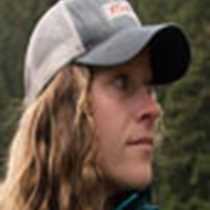Finnish explorer Otto Nordenskold traveled on the Swedish Antarctic Expedition from 1901 to 1904. He and his team made their way to the Weddell Sea, where their ship encountered heavy ice and a series of compounding difficulties en route. With a tough decision to break up the crew, they decided to leave the group in three pieces and scattered around the frozen Weddell terrain. It is greatly fortunate, if not peculiar, that the fragmented crew would later rejoin without losing a single man.
This Nordenskold was not only a geologist, but also took part in South Georgia’s whaling effort in the late 1800’s. The explorer’s professional expertise and his accomplished background would land him a namesake for the very glacier our guests onboard National Geographic Orion toured today.
The Nordenskold glacier sits on the northern coast of South Georgia, deep in an easterly fjord. Antarctic terns flit overhead, nesting and tending to their young here, while skuas patrol the skies. The formation of this landscape is a slow enterprise. The glaciers form over hundreds or thousands of years of harsh winter conditions. Snowfall after snowfall is compounded into dense glacial ice. All the while this fluid body slowly flows toward the sea, where it either protects it’s advance with a glacial moraine or retreats by effect of the eroding seawater.
We were taken to Grytviken this afternoon, an old whaling station situated slightly north of our morning location. Between the late nineteenth and twentieth centuries, this station was a prominent harvesting ground for thousands of whales, from blues and humpbacks, to fins and southern right whales. Evidence of this activity lines the shore in old oil barrels rust and tools that have been long since abandoned, all remaining in the very place they were long ago left.
Ernest Shackleton, the great explorer of the early 1900’s, is buried here alongside his right-hand man, Frank Wild. The two of them lay facing Antarctica, an object of deep affection for both men. Grytviken now houses representatives of the UK Antarctic Heritage Trust as well as polar scientists operating out of King Edward Point. Guests have the opportunity at Grytviken to explore the museum, see the remains of the whaling station as well as the curated museum. Inside, a replica of the famous James Caird sits inside, paying tribute to the incredible crossing of a few men during the Imperial Trans-Antarctic Expedition between 1914 and 1917.
After a lovely day ashore in South Georgia, guests afforded themselves the luxury of the comfortable stretch of lounging and libations while listening to presentations delivered by the ship’s naturalist. Most would agree, including perhaps Nordenskold and Shackelton, that today was expedition done right.







